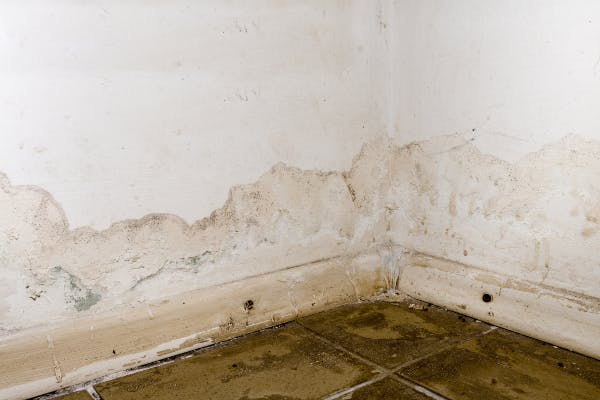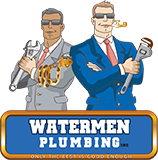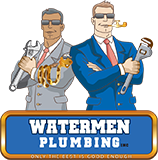Damaged plumbing, water-soaked surfaces, marginal exposure to sunlight, and low relative humidity are the perfect conditions for mold to take hold in any part of your home. Of all these factors, problems with a home’s plumbing system are the most significant. Damaged plumbing sets the scene for the other conditions to become present, but it is also the one factor that homeowners have the most control over.
It is unavoidable that some sections of your home will receive less sun exposure than others. This fact alone, however, does not make such areas right for mold growth if poor ventilation and moisture-laden air are not also present. In every part of your home where there is a high probability for mold growth, the primary trigger for that event will always be excessive moisture. The most likely source of that water is damage to any part of the home’s plumbing.
Plumbing problems in the home equals a greater likelihood of mold. Therefore, to prevent mold, you have to avoid plumbing problems. That sounds simple enough, but the challenge is that an average home has more than a hundred feet of plumbing. Monitoring the whole length of it is not always possible.
What can help is knowing the types of plumbing problems that are most likely to result in mold and mildew growth. If you also notice the area where these problems frequently occur, preventing mold invasion of your home will be easy.
Below are the plumbing issues that most commonly predispose your home to mold.
Leaks Beneath a Kitchen Sink
You might think it would be easy to tell if a pipe below your sink was leaking. You would either expect to hear the sound of falling water or the floor around the sink to be wet. However, you will only see these signs if the area is not enclosed or used for storage. Under-sink sites are one of our favorite places for hiding kitchen stuff while keeping them within reach. Also, to improve the kitchen’s aesthetics, homeowners will enclose this area to hide ugly piping. If the underneath area of your sink is an enclosure or used for storing items, leaks there will be harder to detect, and mold growth will become a real possibility.

Standing Water
Familiar events that lead to standing water in the home are clogged drains and blocked sewers. More often than not, these happen in the bathroom. Any plumbing problem that causes water to drain slowly gives it time to penetrate below the surface of the adjoining areas. Water seeps into the flooring, walls, and tile spaces, where it can remain and produce conditions necessary for mold growth. It is difficult to detect this issue. That is because once the standing water drains, homeowners assume that the problem is over. What they don’t realize is that some water goes into the walls and flooring instead of the drain.
Basement Moisture
Moisture in the basement may happen as a result of plumbing issues or adverse weather. Basements are naturally more humid than the rest of the home because they often have poor ventilation and very little sunlight coming into them. Additionally, many of the home’s water-bearing features pass through the basement, such as pressurized hot or cold water supply lines, sumps, and drain pipes. Furthermore, the basement has exposure to water from rainfall and snowmelt. These factors join forces to increase the probability of water pooling and plumbing problems in the basement and the onset of conditions that predispose the area to mold.
Hidden Leaks
There is no lack of opportunities for plumbing leaks to happen in some out-of-sight area of the home since a decent part of the home’s piping runs through its walls. When pipe bursts happen inside the walls, they don’t leave a pool of water as a tell-tale sign of the incident. The water is released into and absorbed by the surrounding drywall and insulation. The only signs of the leak may be walls that are uncharacteristically cool or very slightly discolored. However, if the leaking pipe is in a hidden area of the wall, detection becomes even more difficult. The best way to keep ahead of this problem is through regular inspections and timely maintenance.

Any Kind of Flooding
Most of the house building materials are porous; they absorb and retain water. During home flooding following human error or natural events, the building soaks up water. The longer the home stays flooded, the more time the water has to work its way into the home. But after removing the floodwater and cleaning, the water absorbed by the home’s surfaces and contents is not automatically released. Instead, it will remain trapped in the walls, floors, wooden structures, and other materials in the home. Over time, that water leads to deterioration of the building and also creates room for mold growth.
Do You Need a Plumber’s Help?
When you need help with your home’s plumbing, Watermen Plumbing, Inc. can be there to help. It’s never a comforting sign to notice mold growth in your home or a plumbing problem, but signs of one can be signs of the other. Get the help you need when your plumbing’s acting up by contacting us today to schedule an appointment.
Get in touch with Watermen Plumbing, Inc. by connecting with us online or by calling (954) 997-5797.

